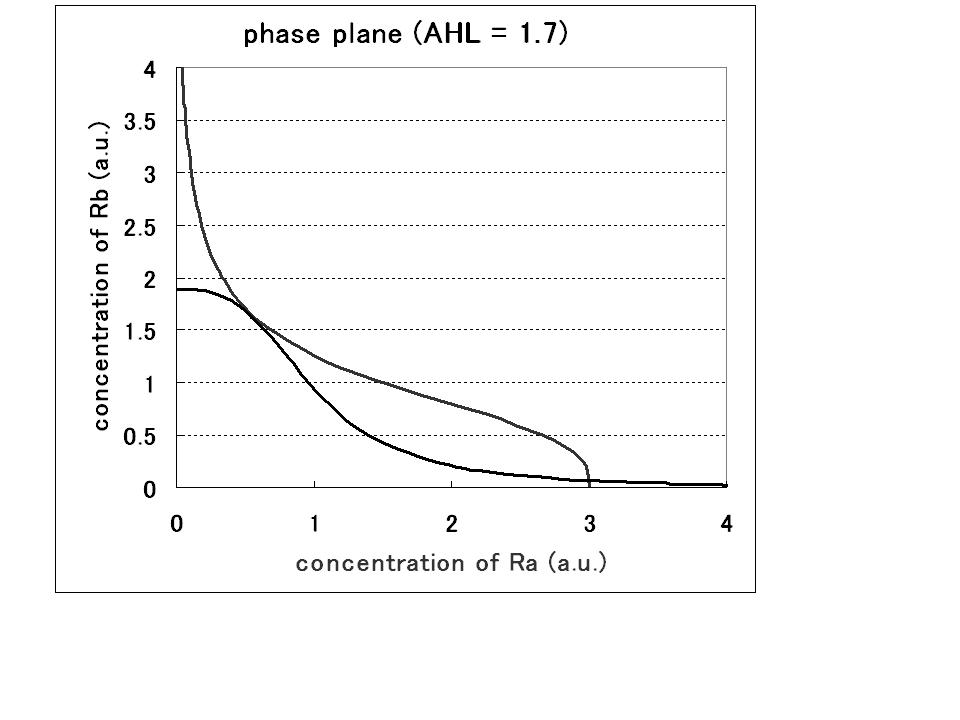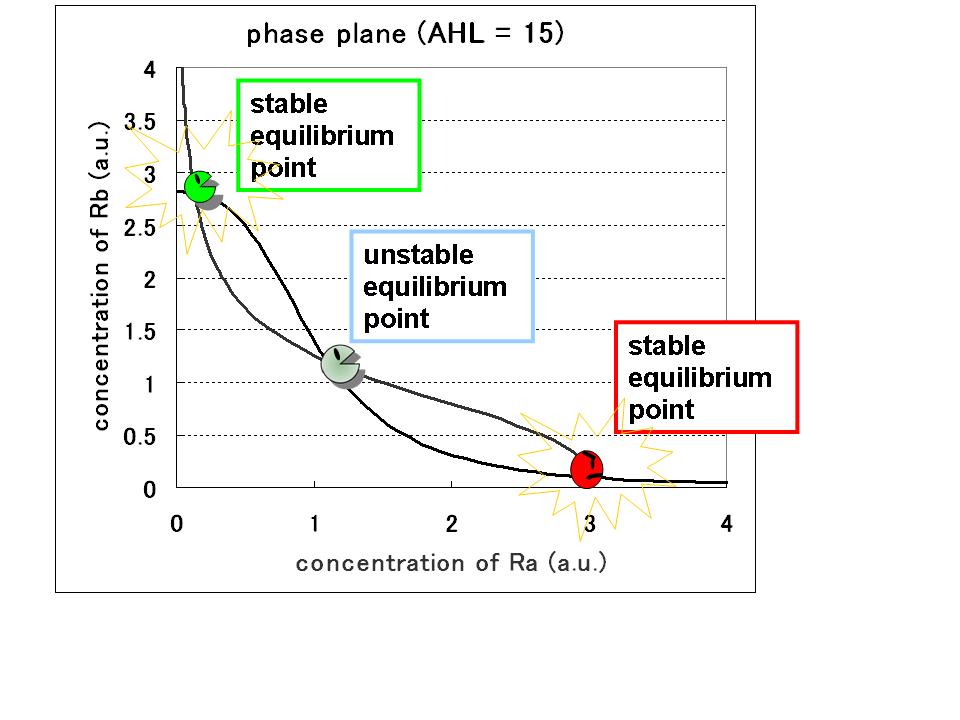Tokyo/Works/Formulation
From 2007.igem.org
Works top 0.Hybrid promoter 1.Formulation 2.Assay1 3.Simulation 4.Assay2 5.Future works
Step1. toggle model
First, we saw the qualitative nature implied by simple dimentionless equations and found that the number of the stable points is one or two. Since our model must have A and B states, the number of its stable points should be two.
For the parameters required for this bistability, we have found that the production rates and Hill coefficients are critical.
--
Step2. toggle model with hybrid promoter
Factors of the hybrid promoter should be incorporated into the equations; that is, the factor of the repression of toggle by LacI and that of the activation by AHL should be added. By these additions, the phase plane changes dependent on the amount of AHL. Lower concentration of AHL, monostable; while, higher one gives bistable.
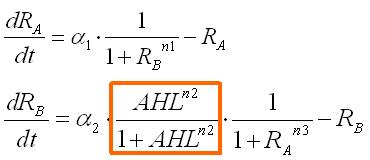

Step3. using cell-produced AHL
Now develop this system to the one with cell-produced AHL.
This time, the nullclines are assymetric and the phase plane is unconventionally shaped.
Here the new parameter λ is introduced whether monostalbe or bistable of the system depends on the parameter sets
for more detail
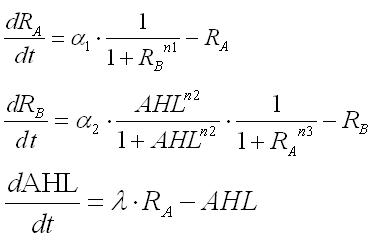
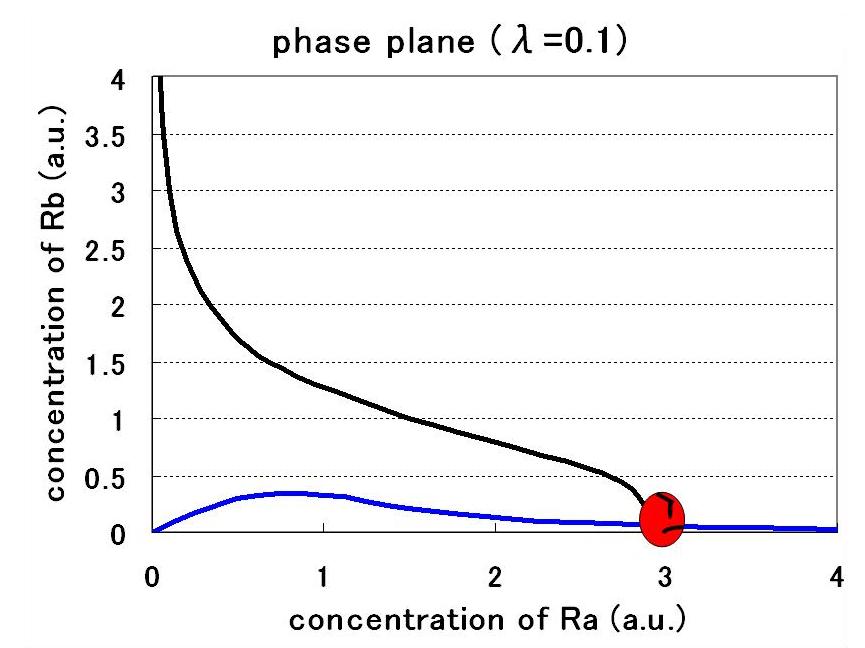
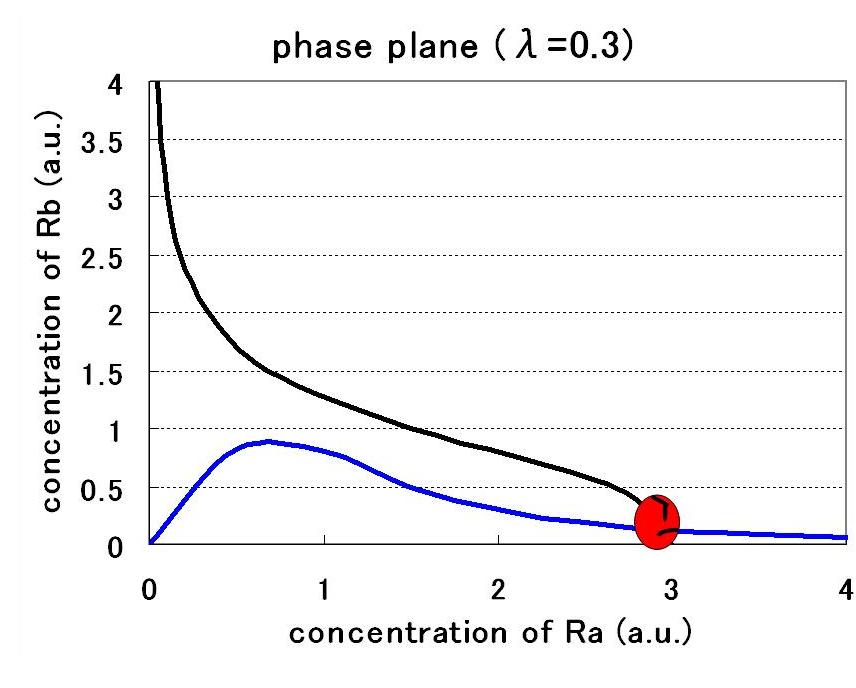
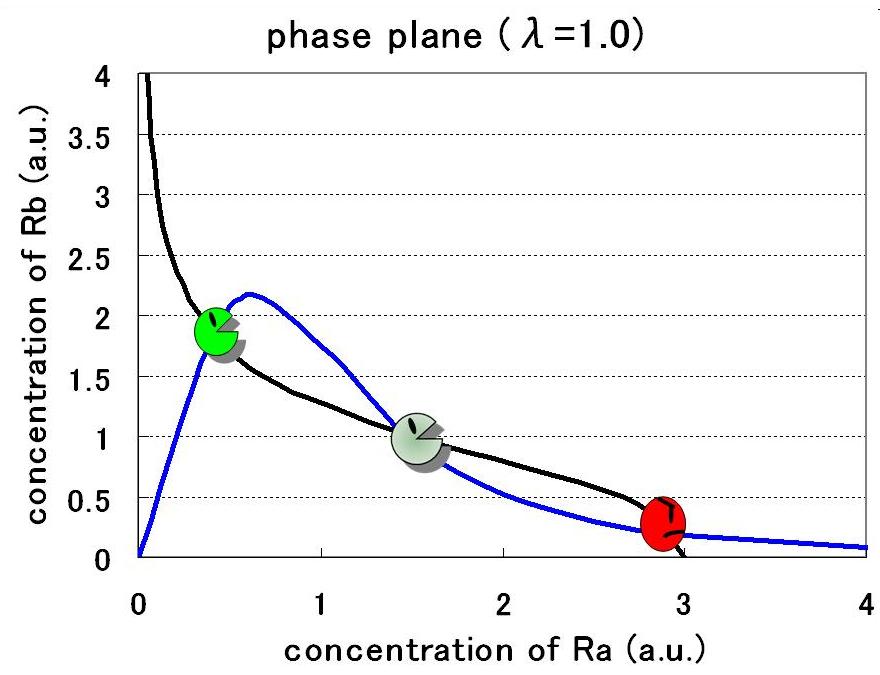
Step4. population model
Here the concentration of AHL outside of cells was assumed to be the same concentration of AHL inside the cell according to the description that AHL is freely permiable through cell membrane in the referenced articles. The phase plane analysis was made possible by focusing on an individual cell. The parameter N was assumed to be the number of the cells.
However, all the individuals behaved in the same way in this deterministic model. To see the bahavior of each individual cell, it is necessary to carry out stocastic simulation.

